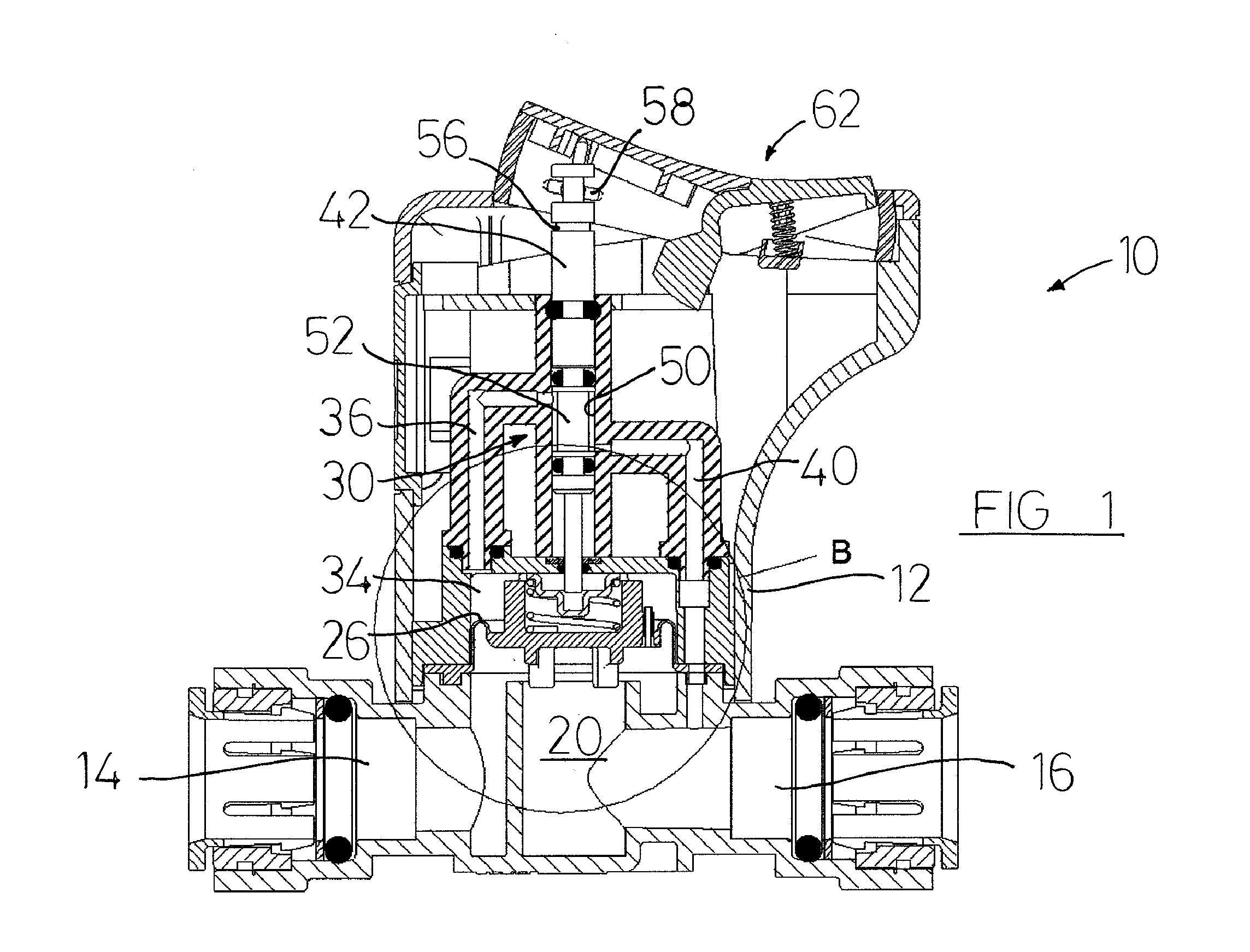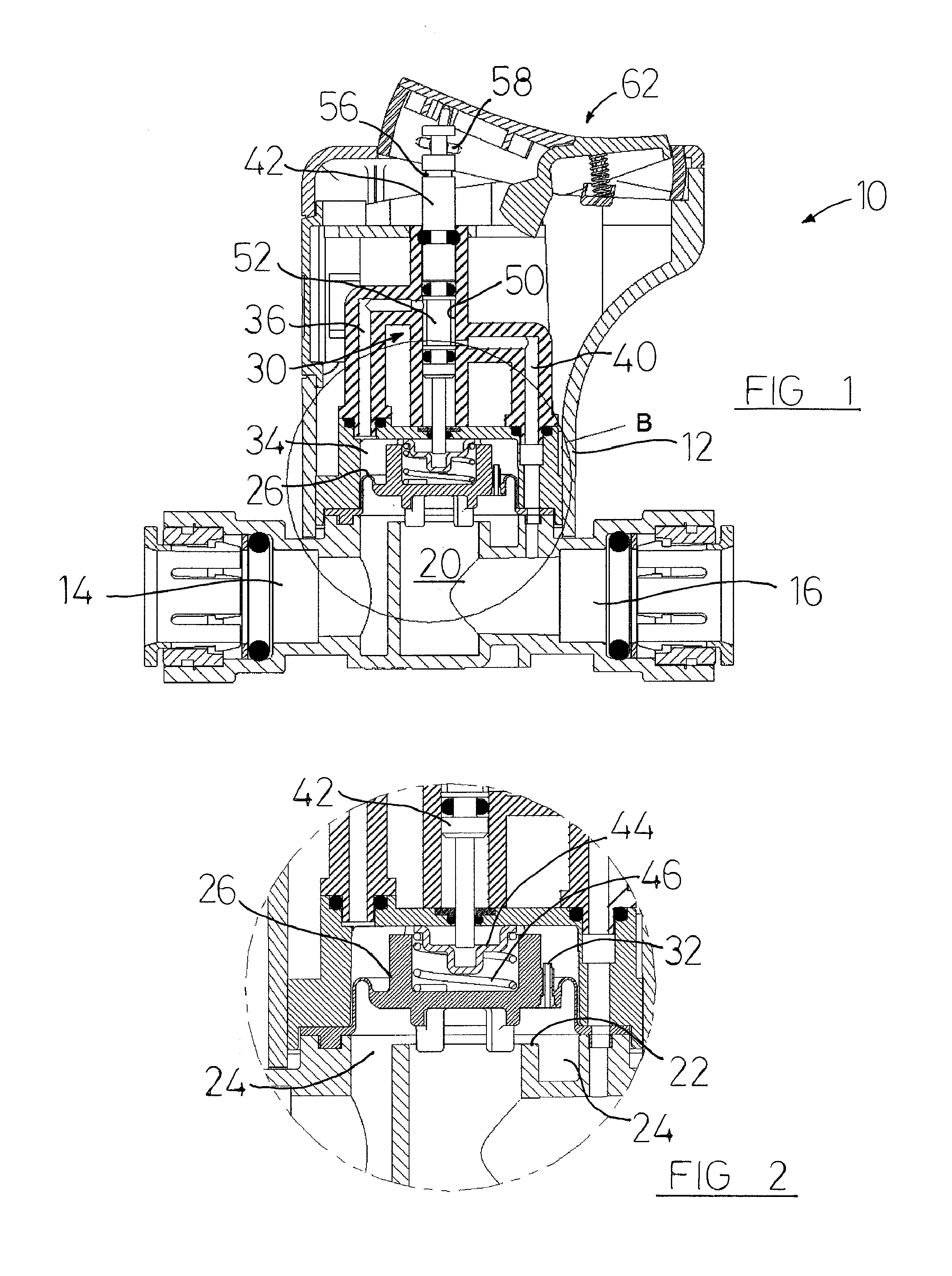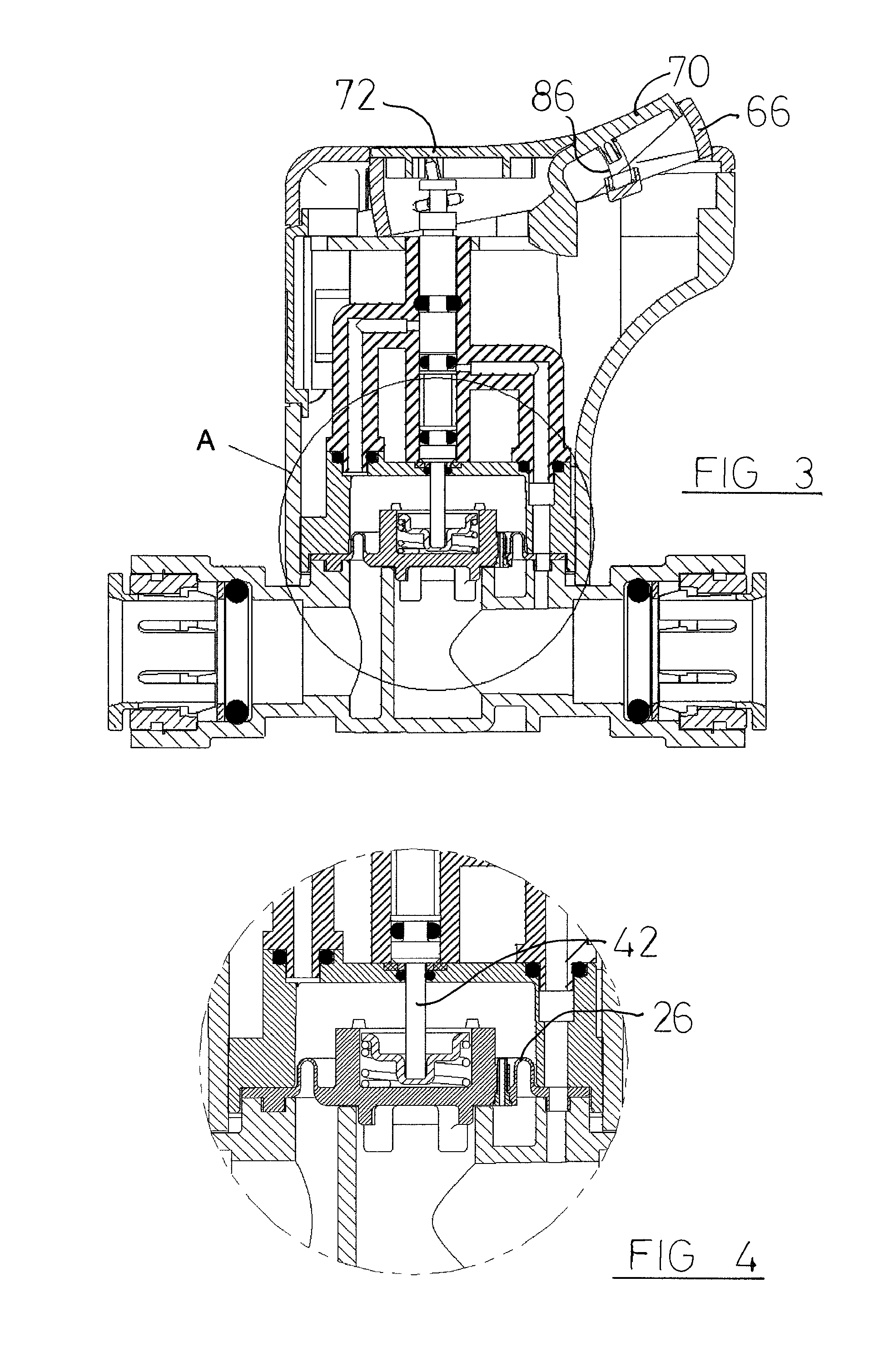Shut-off valve
- Summary
- Abstract
- Description
- Claims
- Application Information
AI Technical Summary
Benefits of technology
Problems solved by technology
Method used
Image
Examples
Embodiment Construction
[0031]FIGS. 1-4 show a shut-off valve 10 according to the present invention. The shut-off valve 10 includes a diaphragm valve having a body 12, which in common with prior art diaphragm valves has an inlet 14 and an outlet 16. The outlet 16 is in fluid communication with the hollow interior 20 of the valve seat 22, and the inlet 14 is in fluid communication with the chamber 24 surrounding the valve seat 22.
[0032]The valve member or diaphragm 26 is secured to the body 12, and is flexible so that it can alternately seal against the valve seat 22, in which case it closes off the flow of fluid from the chamber 24 to the hollow interior 20 (and so from the inlet 14 to the outlet 16), and be free of the valve seat, in which case fluid can flow from the chamber 24 to the hollow interior 20 (and so from the inlet 14 to the outlet 16).
[0033]The diaphragm valve of this embodiment shares many features of prior art diaphragm valves, as will be described here for ease of reference.
[0034]The posit...
PUM
 Login to View More
Login to View More Abstract
Description
Claims
Application Information
 Login to View More
Login to View More - R&D
- Intellectual Property
- Life Sciences
- Materials
- Tech Scout
- Unparalleled Data Quality
- Higher Quality Content
- 60% Fewer Hallucinations
Browse by: Latest US Patents, China's latest patents, Technical Efficacy Thesaurus, Application Domain, Technology Topic, Popular Technical Reports.
© 2025 PatSnap. All rights reserved.Legal|Privacy policy|Modern Slavery Act Transparency Statement|Sitemap|About US| Contact US: help@patsnap.com



